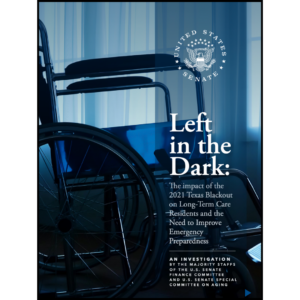A case of scabies
Staff and residents at an Asheville, N.C., nursing facility recently were treated for scabies when a case of the parasitic mite was discovered, according to a news report. The facility immediately began infection prevention procedures to contain the outbreak.
Scabies is contagious and is transferred by direct skin contact with an infected individual. The scabies mite burrows under the upper layer of the skin, where it lays its eggs, causing intense itching and a pimple-like rash. In nursing homes and other long-term care facilities, the rash or itching may not be apparent because residents may be immunocompromised or elderly; this could lead to misdiagnosis and delayed treatment. It may take two to four weeks for symptoms to appear after infestation. Scabies might not even be recognized until staff members begin to suffer symptoms.
Crusted (Norwegian) scabies are highly transmissible and require quick and aggressive treatment to prevent spreading.
Treatment
No over-the-counter products have been tested or approved to treat scabies, according to the Centers for Disease Control & Prevention (CDC). Scabicide lotion or cream kills the mites, but is only available by prescription. The lotion or cream should be applied to clean areas of infection and left on the body for the amount of time in the medication instructions before washing off.
Contaminated clothing, towels and linens used by the infested individual should be laundered in hot water and dryer; dry cleaned; or sealed in a plastic bag for at least 72 hours, notes CDC guidelines.
Control
The CDC recommends:
- Single case of non-crusted scabies. Heighten surveillance for additional outbreaks. Avoid skin-to-skin patient handling. Treat patients and staff who had prolonged skin contact with the infected persons. Avoid skin-to-skin contact with the patient after treatment.
- Multiple cases of non-crusted scabies. In addition to the infection control protocols for single case, the CDC recommends implementing a facility-wide information program about scabies and how it spreads
- One or more crusted scabies cases. Infection control personnel and dermatologists should become involved as soon as a case of crusted scabies is suspected. Patients with crusted scabies should be isolated to prevent. Any staff involved with a person with crusted scabies should be gowned, masked and wear shoe covers to prevent spreading the infection.
If scabies is suspected or detected, the CDC offers specific guidelines to help stop the outbreak and prevent recurrences.

Sandra Hoban was on I Advance Senior Care / Long-Term Living’s editorial staff for 17 years. She is one of the country’s longest-serving senior care journalists. Before joining Long-Term Living, she was a member of the promotions department at Advanstar Communications. In addition to her editorial experience, Sandi has served past roles in print and broadcast advertising as a traffic and talent coordinator.
Related Articles
Topics: Clinical , Risk Management











